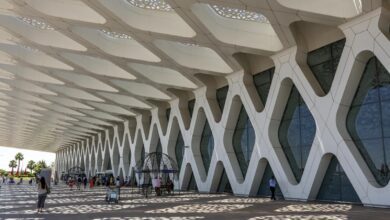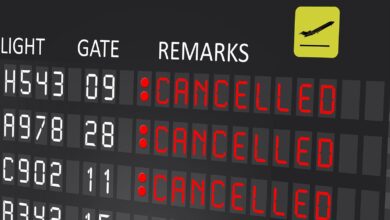How ‘Taxiway Victor’ Helps Keep Everyone Moving At Atlanta Airport
ATL is home to the United States’ first end-around taxiway

Hartsfield-Jackson Atlanta International Airport is one of the busiest airports in the world. The airport welcomed more than 93.6 million passengers through its gates in 2022 – and according to OAG, is set to be the world’s busiest airport by number of seats next month, with over 5 million domestic and international seats available.
With so much traffic, it is crucial that the airport’s runways and taxiways are well-organized and efficient to keep everything moving smoothly. One critical component in achieving this is the airport’s Taxiway Victor.
Traffic on the taxiway
The usual procedure at Atlanta Airport is to use runway 8L/26R for arrivals and 8R/26L for departures. Of the five runways at the airport, these two north runways are the most extensively used as they serve flights that take off and land towards the west – which occurs around 70% of the time.
Prior to Taxiway Victor, up to 700 aircraft a day would have to wait in line for clearance to taxi across to the other active runway to get to the gates. Not only did this frustrate passengers who were eager to get off the plane, but it also increased fuel burn.
Want answers to more key questions in aviation? Check out the rest of our guides here.
Thus came the idea to build a taxiway that would solve this issue: a $42-million, three-quarter-mile strip of pavement known as Taxiway Victor. The project was expected to save precious time for passengers, as well as trim $26 to $30 million off airline fuel costs each year.
The Loop
Taxiway Victor – or The Loop, as pilots call it – is an end-around taxiway that runs around the runway safety area below the departure surfaces. It is a vital component of the airport’s taxiway system and plays a critical role in ensuring that planes can move around the airport efficiently.
One of the main advantages of Taxiway Victor is that it reduces taxi time for aircraft. The taxiway is located between the north and south runways, and it provides a shortcut for planes that have landed on the north runway and need to taxi to the south side of the airport. Instead of holding short of runway 8R/26L, aircraft arriving on 8L/26R are now able to proceed directly to the terminal area.
Get all the latest aviation news for North America here
Another benefit of Taxiway Victor is that it helps to reduce congestion on the airport’s other taxiways. By providing an alternate bypass route for planes, it allows airlines to achieve quicker turnaround times, avoiding delays on subsequent flights. And it goes without saying that safety, too, is enhanced, with lesser possibilities of collisions.
Leading the (taxi)way
Taxiway Victor is a crucial component of Hartsfield-Jackson Atlanta International Airport’s taxiway system. While a significant investment for the airport (half financed by the Federal Aviation Administration and the remainder by passenger fees), the construction of this end-around taxiway makes a valuable addition to the airport’s infrastructure. In fact, the taxiway has been so successful that it has become a model for other airports looking to improve their taxiway systems.
Following the officiation of Taxiway Victor in 2007, Dallas Fort Worth International Airport opened its southeast side end-around taxiway in 2008. This was followed by a second on the northeast side, which opened in 2022, and a third to be completed by 2025. Atlanta Airport also recently unveiled its second end-around taxiway, Taxiway Whiskey, in November 2022 – becoming the second US airport to have two such taxiways.
Source: OAG, AviationPros





